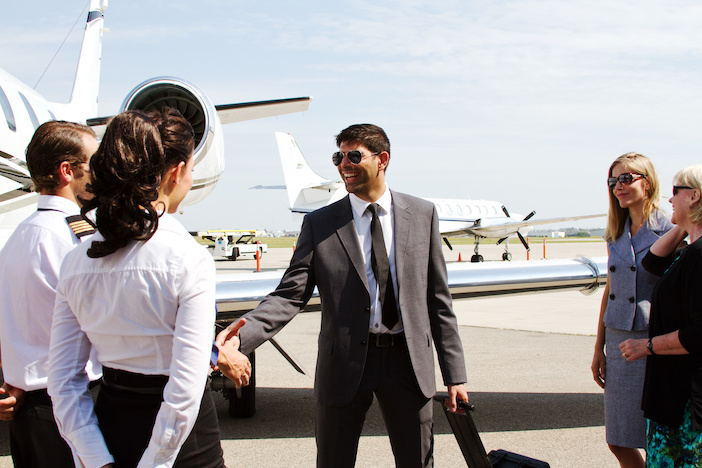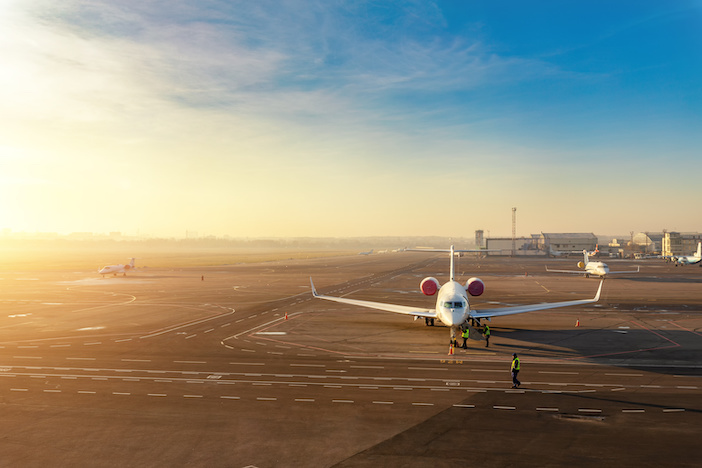by Keri Allan
According to a survey by the US National Air Transportation Association, 90% of the USA’s business aviation community has been negatively affected by illegal chartering – when privately-owned planes are used to transport passengers without the required licensing and inspections from aviation authorities.
Essentially the unlicensed taxicab of the aviation world, the majority of illegal chartering — also known as gray chartering — goes unreported as people are concerned about potential repercussions to their own businesses, and even question how or if the authorities will respond. Therefore, the full extent of the problem is still unknown. But even without the full picture the industry considers illegal chartering a major issue, one that it’s working harder than ever to address.
Gray chartering is very much a global issue, but anecdotal evidence has shown that illegal activity does tend to be seen in some regions more than others. Until recently gray chartering was rampant across the Middle East. Although far from eradicated, the Middle East and North Africa Business Aviation Association (MEBAA) has worked hard to control the problem. Southern states in America, such as Texas and Florida, have also been highlighted as problem areas.
“Texas is a really big state and there are a lot of small airports. There’s a lot of valuable and dry leasing of jets. The airports are hundreds of miles away from the local FAA office, so nobody looks at them. When there’s less of a physical FAA presence there are more opportunities,” says David Norton, partner and head of aviation practice at legal firm Shackelford, Bowen, McKinley & Norton.
The risks
Those with air operator certificates (AOCs) go to great lengths to ensure everyone is safe by having the correct procedures and people in place to check everything before each flight. As Robert Baltus, chief operating officer of the European Business Aviation Association (EBAA) points out, the status and maintenance of the aircraft and the training of the pilot cannot be guaranteed when you operate a private flight, which opens up risks to everyone involved.
“The consequences of illegal charters can be different for all the parties involved,” Baltus says. “Pilots can lose their hard-earned licenses, aircraft owners might not be paid by their insurance companies, businesses can be prosecuted, and the customer doesn’t get what they paid for.”
The worst consequence of gray charter is that someone gets hurt or killed. The most high-profile case of illegal charter to make the news recently has been the crash of a Piper Malibu last year, which caused the death of Premiership soccer player Emiliano Sala and pilot David Ibbotson, who was not licensed to fly at night.
The careless, clueless and the criminal
Some associate a recent increase in illegal chartering with the rise in new business models in business aviation. Thanks to online platforms people can now book a flight with just a few taps of their mobile phone, without knowing the credentials of the company or pilot.
“If an aircraft shows up clean and pretty and the pilot walks out with a crisp white shirt with epaulettes on then, we tend to think the boxes are checked and it must be a safe operation. But that couldn’t be further from the truth,” says Ryan Waguespack, vice president of aircraft management, air charter services and MROs for the USA’s National Air Transportation Association (NATA). “I like to say we’re a victim of our own success as the aviation industry has created a very safe environment, allowing people to think they’re always safe when they step onto any plane.”
But this issue of ignorance doesn’t just lie with the paying public. A lot of illegal charter happens when pilots do not understand the law and charge for flights when they shouldn’t. This could be owners lending aircraft to others for a profit and confusion around regulations on cost-sharing.

“People don’t understand the rules,” says Dave Edwards, CEO of industry group the Air Charter Association. “They’re doing things for tax purposes or improperly dry leasing, where the business you’re conducting amounts to illegal charter.
“The problem has grown through the rise of flight sharing websites, which offer the potential for passengers with no experience of chartering aircraft to rent a small aircraft, generally flown by a private pilot. Those sites review pilots and use the term safe a lot, with no true understanding of what that might mean and most importantly what the difference is between a private pilot and a commercial one operating under a commercial AOC.”
The sector has coined the term the “careless, clueless and criminal” to categorize those involved in illegal chartering. The clueless are those with no idea that they are doing something wrong, the careless are those in a gray area that may or may not know what they are doing is wrong, and the criminal are those that clearly know the rules but intentionally ignore them.
Taking action
Aviation authorities believe that the two biggest groups are the careless and clueless and the number of criminals is relatively small. One of their big focuses has been around education. In the USA the FAA is running an educational campaign to reduce the amount of clueless and careless illegal chartering activity.
“We’ve had a number of cases fall within the clueless and careless remit and in the past the FAA took a very hardline approach to its enforcement,” says Greg Reigel, partner at law firm Shackelford, Bowen, McKinley & Norton, “Since 2015 FAA has a new compliance program, where it identifies these groups, educates them by providing counselling and directs them to resources that can help them restructure their operation so they comply with the regulations. This allows the organization to focus its energy on those few at the criminal end of the spectrum.”
When it does take enforcement action, the FAA has several approaches. Often it starts by taking action against the pilot by either suspending or revoking their certificates depending on the case. For operators there are large civil penalties. These can take years to be issued, but when the amounts can be high. In June 2018 the FAA issued its largest ever fine to a private company, US$3.3 million to The Hinman Co in Michigan. The company had been operating two aircraft on a timeshare basis through a subsidiary, Hincojet, without holding the required operator certificate for the flights performed.
“That case sent shock waves through the system. They had to pay a lot of cash and had the FAA looking over their shoulder,” says Norton.
A major part of the industry effort around gray charter is communication – providing resources to educate pilots, operators and the public about what makes a charter illegal and giving people better ways to report shady activity and highlighting the consequences of ignoring the rules. NATA has been doing a lot in this area and created an Illegal Charter Taskforce in 2018. It has a section of its website dedicated to information on illegal chartering, a hotline for reporting issues and also runs several events aimed at educating aircraft owners, operators and pilots about illegal charter.
The FAA has also been providing new educational opportunities to its inspectors – those on the ground responsible for oversight. “That’s really critical because when you start looking at some of these leasing or aircraft sharing structures, they can be very complex,” says Reigel.
A combined effort
Waguespack believes that trade associations including the EBAA and ACC are “stepping up” and that the best way to eliminate gray charter is for the industry to work closely with regulators. “We’re meeting with associations around the world to discuss what we can do about this problem,” he says.
“There are great moves amongst the industry associations to combine efforts,” says Edwards. “As an industry we’re going to get far more time and attention from the regulators to help us do something about it.
“I don’t think we’ll ever completely stamp out illegal chartering – as with any law, there are always people looking for the loopholes to get around legislation.
“But by educating everyone involved and being consistent with our message it will reduce. Anything we can do to ensure that the traveling public is safer, that our legal industry and the livelihoods of the thousands of people in it is protected has to be welcomed.
“One less illegal flight has to be a win for all of us.”
The importance of operational control in the USA
The USA’s large and diverse aircraft population meets a variety of needs. To accommodate those needs, a complex regulatory framework has evolved. The necessary authorities and operational regulations are determined on a flight-by-flight assessment of the relevant facts.
This can lead to flights that, while similar in mission, may operate under private carriage rules in one case but require a commercial air carrier in another. The operation of a flight under private carriage regulations when the facts require operation by an air carrier can lead to significant fines and penalties for those concerned.
The concept of “operational control” is a good starting point to determine applicable operational rules. US regulations define operational control as “with respect to a flight, means the exercise of authority over initiating, conducting, or terminating a flight” (14 CFR 1). Put simply, the party with operational control is the entity ultimately responsible for, and in control of, the flight. All general aviation businesses across the spectrum of industry operations require a careful review of facts to determine where operational control lies and whether a proposed operation requires air carrier authority. When engaging an air charter carrier, customers request departure time, destinations and even specific aircraft, but the ultimate responsibility for the flight and operational control, always remains with the carrier.
Illegal charter fact sheets for aircraft owners, charter brokers and air charter operators are available at
www.avoidillegalcharter.com
European charter compliance checklist
According to Julie Black, deputy chair of the Air Charter Association (ACC) and manager of executive aviation at Hunt & Palmer, there are a number of points to check to ensure a European charter is fully compliant and legal.
“When we’re chartering aircraft for our clients for intra-European trips, firstly we’d look to use an operator from Europe, including the UK, as appropriate. Aircraft registered outside of Europe would have to apply for traffic rights to fly within the EU,” she says.
“As a broker, we entrust our operating partners to comply with crew licensing, aircraft maintenance and all of the technical aspects of operating a charter flight within Europe. It’s a leap of faith but we trust the authorities and operators.”
- Does the aircraft operator hold a valid Aircraft Operator’s Certificate (AOC)?
- Is the specific aircraft registration listed on the operations specification of that AOC as for charter in the required category?
- Is the aircraft insured for commercial charter operations and is it flying to any country not covered on the insurance? Certain exclusions, usually conflict zones or sanctioned countries, will be stated thereon.
- Does the aircraft have a valid Certificate of Airworthiness?
- Are there any special challenges for the airports in question that require special crew training or experience and does the operator have such crew available on the day of operation? Category C airports such as Sion or London City are good examples.
- Is there enough crew duty for the requested schedule?
- Are we using the right aircraft for the operating criteria? Some airports would have night-time noise curfews that prohibit older or heavier aircraft or aircraft in excess of a certain capacity.
- Do passengers, pets and cargo all have the correct documentation?





